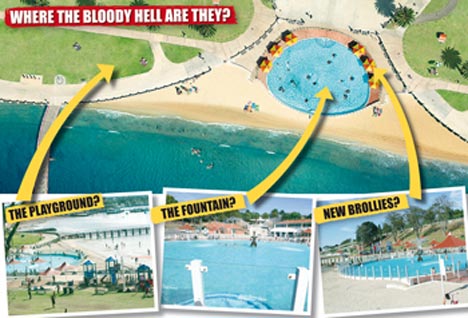Here’s another cautionary tale, lest you’re a tempted to engage in false advertising regarding the relative merits of your local tourist attractions. The state government of Victoria, Australia, is running a campaign promoting the Geelong waterfront with satellite images… except that the images were doctored. The Geelong Advertiser caught them:

Here, by comparison, is how the view looks in Google Earth:

That’s Digital Globe imagery from 2004, and it’s clear the ad is based on something better and hopefully more recent. But nothing beats sending a reporter over to the waterfront to do a visual check. The result:
City of Greater Geelong Mayor Bruce Harwood said the council was negotiating with Tourism Victoria to change the image because the accuracy was “not quite right”.
While I think there is room for poetic license in the case of something as inconsequential as tourism advertising, it’s interesting to note that as we become savvier about the provenance and availability of such images, we also become more adamant that they convey correct information. And if you doctor images in the cause of tourism, be prepared for a backlash when your tourists actually come, and reality falls short of what you promised.
It seems like most google satellite images are pretty old. An image of my house on google earth shows it as it was years ago. Has anyone actually been to that location to see whether those structures were there? Google Earth doesn’t necessarily have the final word on real-time truth.